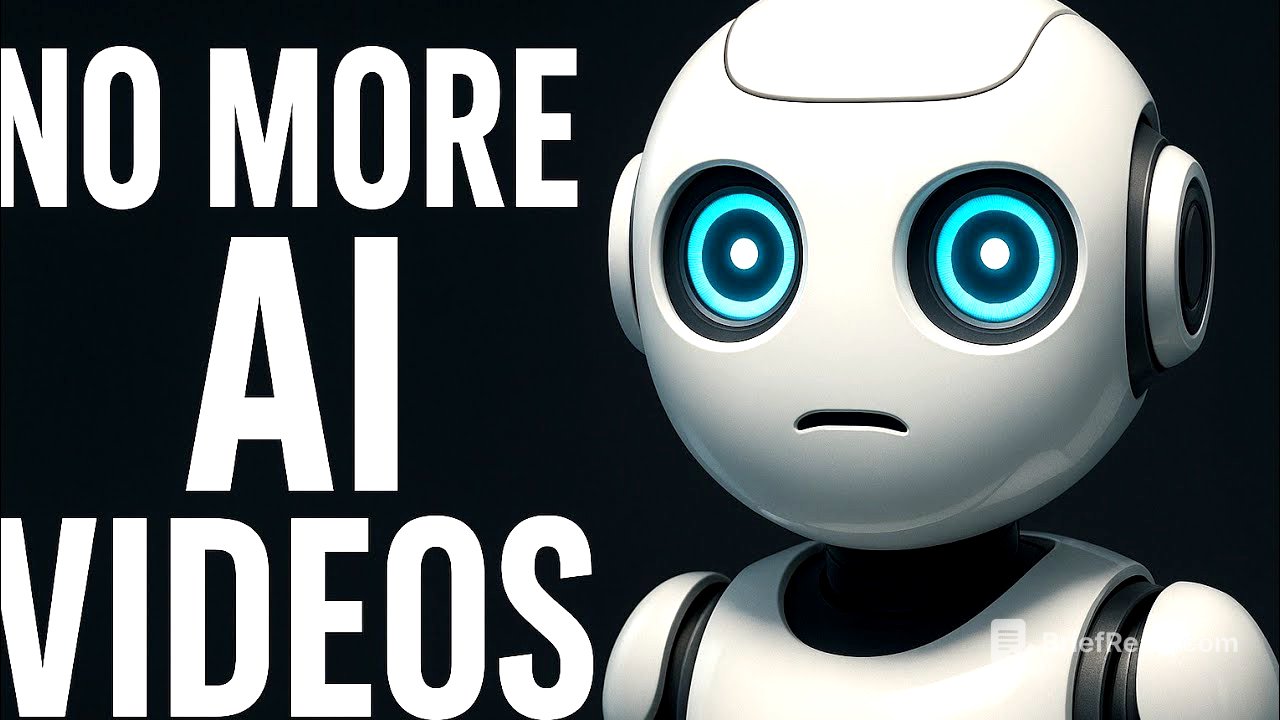TLDR;
The video presents a fictional scenario where YouTube suddenly begins removing videos for violating a new AI content policy, sparking outrage and debate among creators. The situation unfolds with channels receiving strikes, a viral protest video being removed, and a trending hashtag. The video explores potential reasons behind the ban, including advertiser complaints, copyright concerns, and YouTube's fear of AI channels overshadowing human creators. Ultimately, YouTube announces a review of its AI content policies, leaving the future uncertain.
- YouTube creators face a sudden wave of video removals due to a new AI content policy.
- A protest movement emerges, highlighting the conflict between AI and human-created content.
- The video speculates on the motivations behind YouTube's actions, including competition and control.
- YouTube announces a policy review, leaving the future of AI content on the platform unclear.
The AI Content Purge [0:24]
The story begins on a Monday morning when numerous creators find their videos removed due to a violation of a new AI content policy. Initially, it's believed to be a glitch, but soon, large channels known for using AI voices, storytelling, and animation start receiving strikes. YouTube remains silent, fueling the growing panic and confusion among creators.
Creator Backlash [1:02]
The situation escalates as creators take to X (formerly Twitter) to express their outrage and share screenshots of an alleged internal policy update. The update states that all synthetic AI-generated content must be clearly labeled or risk removal. However, the rule is never officially announced, leading to further chaos and uncertainty. An AI animation channel with over 2 million subscribers uploads a protest video titled "We Won't Be Silence," which quickly gains 1.4 million views before being taken down by YouTube.
The Rise of a Movement [2:17]
The removal of the protest video sparks a movement, with the hashtag #nomoreaivideos trending. Creators, both human and AI-assisted, unite to fight against the perceived ban. Theories emerge about the reasons behind YouTube's actions, including complaints from advertisers and concerns about copyright infringement.
The Fear Factor [2:38]
The video proposes a theory that YouTube might be scared of AI channels growing too quickly and taking attention, views, and sponsorships away from human creators. The idea of a robot that can upload numerous videos daily without rest or error is presented as a form of competition that makes big companies nervous.
YouTube's Response [3:01]
Just as suddenly as the crisis began, YouTube posts a quiet update on their blog, stating that they are reviewing their policies on AI content to ensure a safe and creative platform for everyone. The update offers no explanation or apology, leaving the future of AI content on YouTube uncertain and the "AI content war" officially begun.









